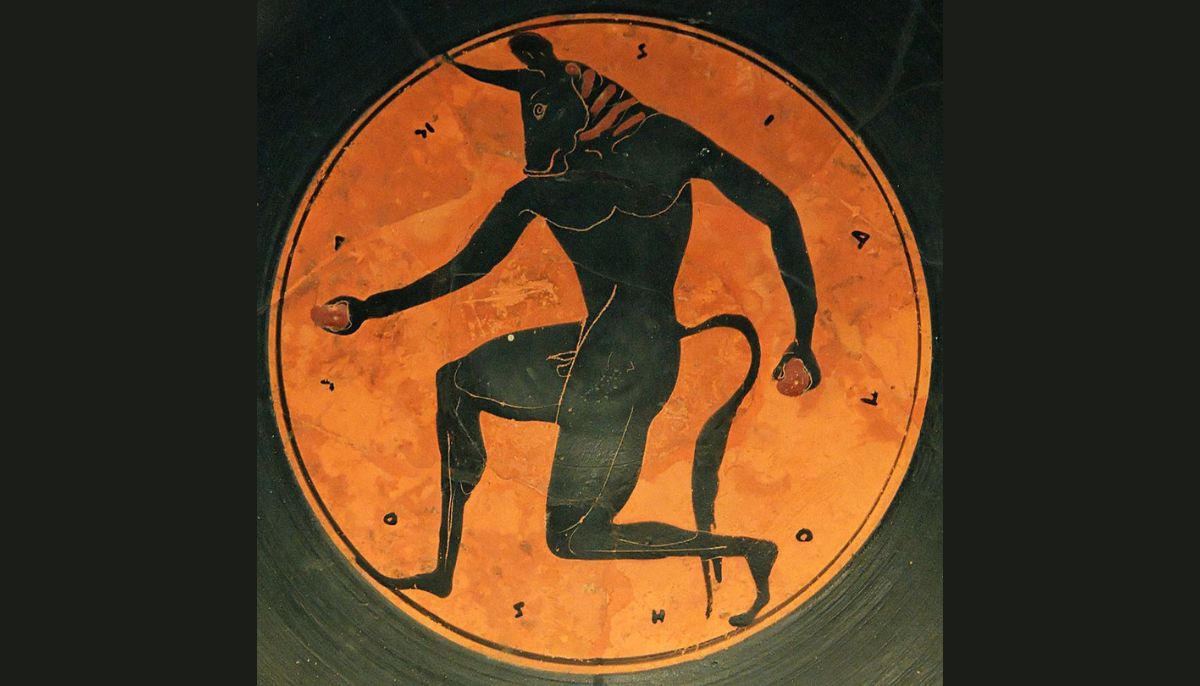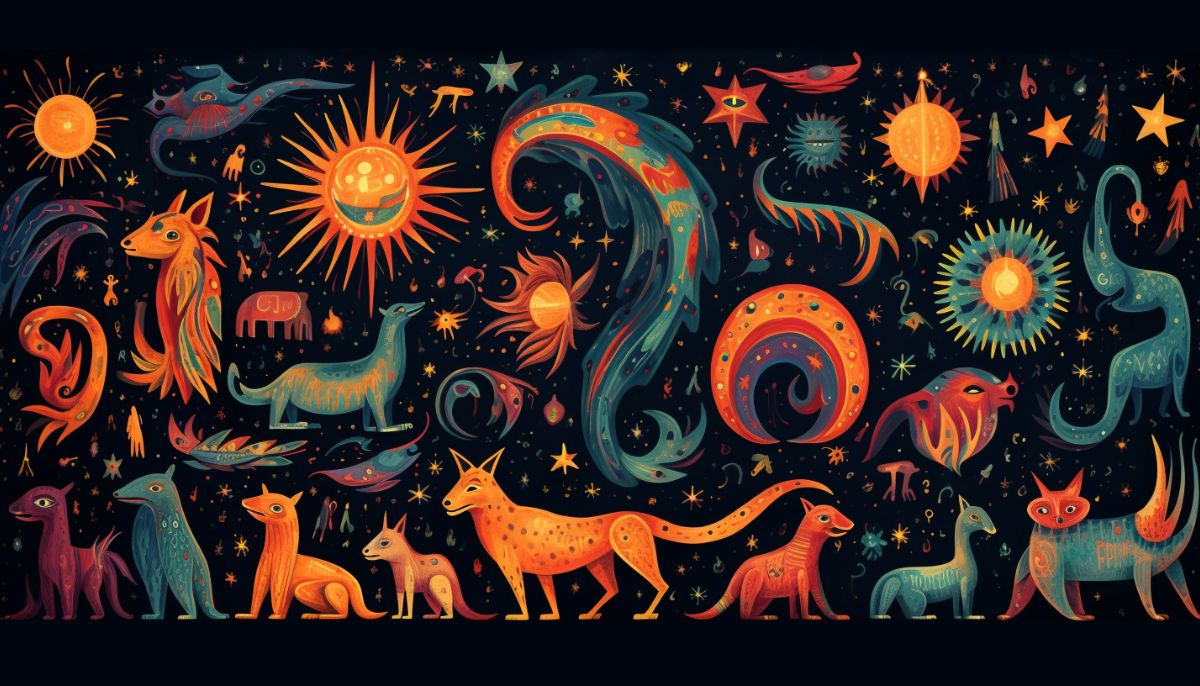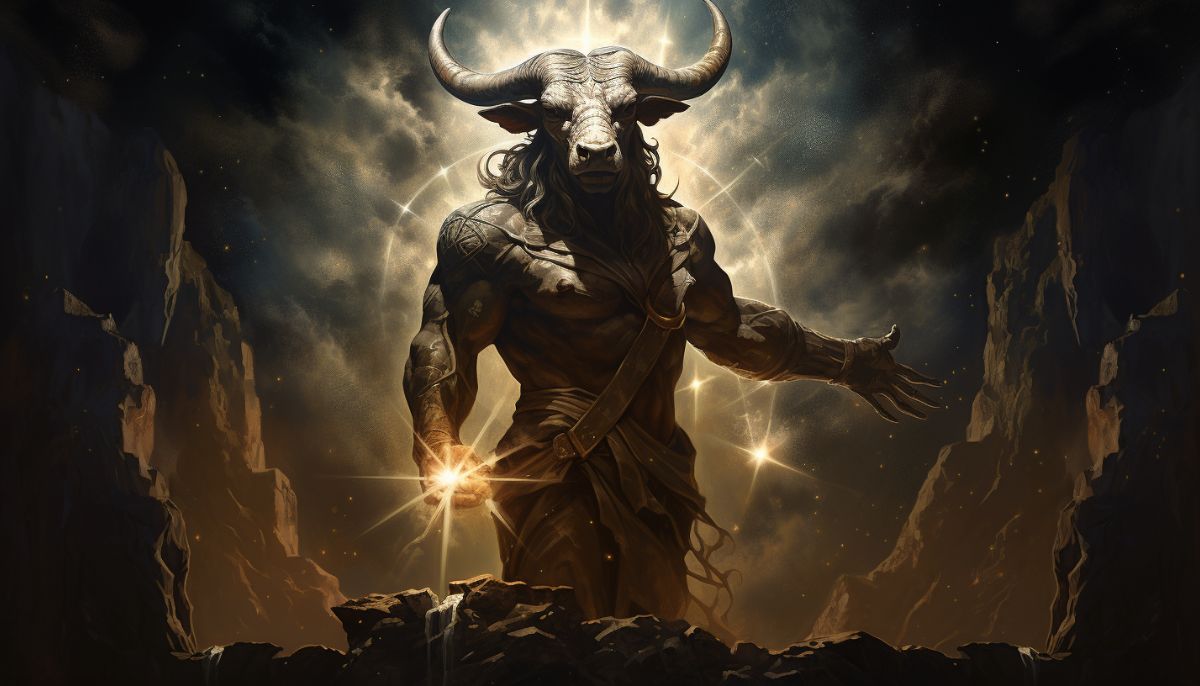Delving into Greek mythology, the Minotaur emerges as a figure shrouded in mystery and fascination.
Born from a convergence of divine will and human desire, this creature, part man and part bull sprang forth from the union of Minos’ wife Pasiphaë and a majestic white bull gifted by the sea god Poseidon.
Their union, forbidden and fateful, created a being that mesmerized and terrified ancient civilizations.
What did the minotaur look like

The visual representation of the Minotaur in classical art and literature is intriguing and diverse, reflecting the rich complexity of Greek mythology. According to ancient accounts, the Minotaur had a man’s body and a bull’s head and tail.
In Sophocles’s play “Trachiniae,” the river spirit Achelous appears as a man with a bull’s head in one of his disguises. This hints that the Minotaur’s appearance might have blended human and bull features.
The Minotaur of the Middle Ages
However, there is an interesting twist in how the Minotaur was portrayed during different historical periods. In Ovid’s account of the Minotaur, he doesn’t specify which half of the creature was bull and which was man. This ambiguity left room for artistic interpretation.
During the Middle Ages, Ovid’s version was widely circulated, and this led to depictions of the Minotaur with a man’s head and torso on a bull’s body—a reversal of the classical description. This portrayal, reminiscent of a Centaur, became an enduring alternative tradition.
This tradition persisted into the Renaissance and influenced various artistic representations. For instance, Dryden’s translation of Virgil’s “Aeneid” describes the Minotaur as, “The lower part a beast, a man above / The monument of their polluted love.” This image still finds its way into modern depictions, underscoring the enduring fascination with the enigmatic Minotaur.
The Mythology of the Minotaur and Theseus
The legend of the Minotaur, a creature with the body of a man and the head of a bull, is deeply woven into the tapestry of Greek mythology.
Rooted in a complex tale of betrayal, retribution, and heroism, the Minotaur’s story is primarily associated with King Minos of Crete and the Athenian hero Theseus.
The Unholy Creation of the Minotaur
Minos, the king of Crete, sought divine favor by praying to Poseidon, the sea god. In response, a magnificent white bull emerged from the depths of the sea. Minos, captivated by its beauty, chose to keep it and sacrificed another in its place.
This act angered Poseidon, who cursed the bull, making it wild, and incited an unnatural passion in Minos’s wife, Pasiphaë. With the help of the craftsman Daedalus, Pasiphaë commissioned a hollow wooden cow, concealing herself within it to mate with the bull.
This union led to the birth of Asterius, better known as the Minotaur—a creature with the face of a bull and the body of a man.
The Minotaur’s Labyrinth
To contain the Minotaur, Minos turned to Daedalus once again. The ingenious craftsman constructed a labyrinth—a bewildering maze with intricate passageways designed to bewilder anyone who dared to enter.
The Minotaur was ensnared within this labyrinth, a terrifying guardian of its depths.
The Athenian Tribute
In his anger over the death of his son Androgeus, Minos imposed a grievous tribute upon Athens. Seven young men and seven maidens, chosen by lot, were sent every nine years as sacrificial offerings to the Minotaur.
The labyrinth’s complexity ensured that once inside, there was no escape.
Theseus’ Noble Quest
Theseus, a courageous prince of Athens, volunteered to confront the Minotaur and end this gruesome tradition. Before his departure, he made a pact with his father Aegeus.
If successful, he would return with a white sail; if not, the black sail of mourning would remain.
Ariadne’s Guiding Thread
Arriving in Crete, Theseus encountered Ariadne, King Minos’s daughter. Smitten by the hero, she gave him a vital tool—a ball of thread.
This thread, cleverly unraveled by Theseus as he ventured deeper into the labyrinth, would serve as his lifeline.
The Fateful Confrontation
In the labyrinth’s heart, Theseus confronted the Minotaur, armed only with his courage and wits. Accounts vary, some recounting a fierce hand-to-hand battle, others involving a club or sword. Regardless, Theseus emerged victorious.
With Ariadne at his side, Theseus led the Athenian youths and maidens out of the labyrinth, their escape facilitated by the guiding thread. However, the aftermath held both triumph and tragedy.
Theseus’ act of abandoning Ariadne on the island of Naxos would forever echo in the annals of Greek mythology.
Legacy of the Minotaur
The story of the Minotaur endures as a testament to the enduring themes of sacrifice, heroism, and the indomitable spirit of mankind in the face of monstrous challenges.
It remains one of the most enduring tales in Greek mythology, a testament to the enduring power of the human spirit.
Similar monsters in Greek mythology
The Minotaur is one example of the fascinating creatures that populate Greek mythology. These beings often blur the lines between human and animal, reflecting the ancient Greeks’ fascination with the supernatural. Here are some other notable creatures:
Centaurs were known for their wild nature, embodying a blend of human and horse. Some were noble, while others were unruly, frequently clashing with humans.
Harpies, with their bird-like bodies and female faces, were associated with storms. Known for their swiftness, they were feared for their ability to snatch people away.
The Chimera was a fusion of lion, goat, and serpent, symbolizing chaos. Its composite nature made it a formidable opponent for heroes.
The Sphinx posed riddles to passersby, with death as the consequence of failure. Oedipus famously solved her riddle.
Gorgons, particularly Medusa, were terrifying with their snake-hair and petrifying gaze. Perseus used her reflection to avoid her deadly stare.
The Hydra, a serpent with multiple heads, was a formidable adversary for Heracles. Cauterizing the neck stumps prevented regeneration.
Griffins, with a lion’s body and an eagle’s head and wings, were powerful creatures often associated with guarding treasures.
These creatures, alongside the Minotaur, form a rich tapestry in Greek mythology, where the boundaries between humans and beasts blur, and the natural world intertwines with the supernatural. For more intriguing tales, delve into articles on these creatures and their roles in ancient Greek lore.
Want to know more about the creatures and monsters of Greek Mythology?

Explore more articles like this in our broader series on Greek monsters. To delve even deeper into the world of mythical creatures, be sure to check out our comprehensive hub article on the monsters of Greek mythology.






